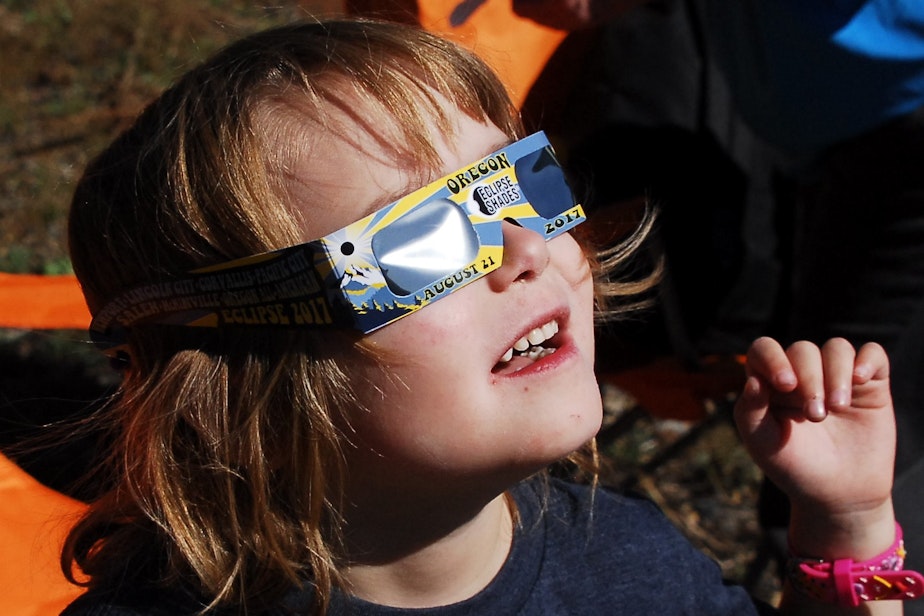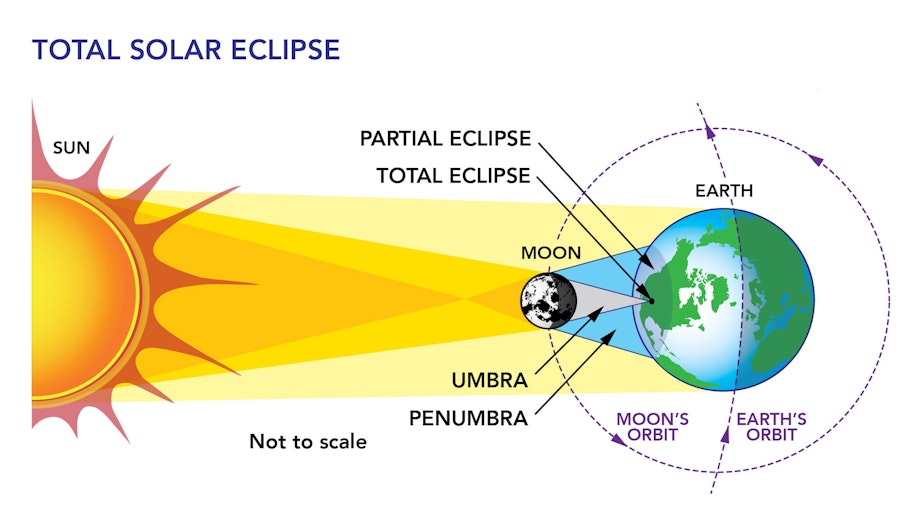Partial solar eclipse in Washington on Saturday: How to experience it safely
A solar eclipse will pass over the United States Saturday morning, Oct. 14. But how much of it will bee seen in Washington?
The moon will pass in front of the sun and darken Northwest skies between 8:07 a.m. and 10:39 a.m., with maximum coverage at 9:20 a.m. This eclipse will be partial in the Seattle area and Washington state. A total eclipse will pass through parts of Oregon.
"Up here in Washington state, we're going to have about 80% coverage of the sun by the moon," Alice Enevoldsen said. "So we're gonna get a very nice crescent sun kind of look."
RELATED: What parts of the USA will experience a full eclipse?
Enevoldsen not only teaches astronomy at South Seattle College, she also has a badge that says, "NASA Solar System Ambassador."
"And you have to admit, that is just about the very best title that exists," she said.
Sponsored
No matter where you are, or how much of an eclipse is in your area, there is one important rule.
"You must never look directly at the sun," Enevoldsen said. "If you are using a pair of safe, reputable solar viewing glasses, which is different than sunglasses, then you can use those to look directly at it. Keep them in front of your eyes anytime you're looking at all towards the sun."
Enevoldsen stressed repeatedly: You have to be safe.

Enevoldsen suggests checking with your local library for a pair of eclipse glasses. The American Astronomical Society also has a list of reputable vendors of glasses that meet all of the safety standards. But Enevoldsen has another option.
Sponsored
"If it is clear, I am going to be holding an event at the north end of Westcrest Park in West Seattle on Saturday morning, and I will have glasses there," Enevoldsen said. "So you can come and get a pair from me."
"If the weather is truly terrible, like if it's thunder and lightning, I'm absolutely canceling it. I will probably drive across the mountains and go to Eastern Washington myself, just to try to see this. But if it's that sort of iffy weather that we get here in Seattle, where it's cloudy but it might clear up a little bit later, then I'm still going to Westcrest Park, because I don't give up on Seattle weather. Our weather changes all the time."
An eclipse is not just about what you see
Enevoldsen recommends paying attention to some other aspects of an eclipse that you may not have considered.
"One thing you can try is see if you can feel or detect a change in the temperature, because with a lot of the sun covered, we're not getting as much radiation from the sun, so we're not getting quite as much heat."
Sponsored
"Listen and see if you can hear how wildlife responds and changes during the time of the eclipse, especially right around the maximum of the eclipse."
Enevoldsen is pretty excited about a new NASA citizen science project called Eclipse Soundscapes you might want to check out, where volunteers make audio recordings of what happens during an eclipse.
RELATED: A full, super, blue moon ... that might actually be red?
Looking further ahead, all of this is good preparation for another viewing opportunity in April 2024 — a total eclipse that will pass through Mexico, Texas, and the northeast United States.
"Where the moon covers the sun and it covers it completely, such that you are able to see the corona of the sun around the outside. And that just looks like streamers. It's very different than anything we ever see. It's the origin of phrases like black hole sun."
Sponsored

Fun eclipse facts and tricks:
- "One of my favorite ways is an indirect method where you use a spaghetti strainer or colander," Enevoldsen said. "What you do is take that outside with a piece of paper. Put the paper on the ground, turn your back to the sun, and then hold out the spaghetti strainer so that you can see the shadow falling on that piece of paper. Each one of those little holes that you see is going to be an image of the sun."
- Earth is the only planet in our solar system where a moon can perfectly mask the sun, resulting in spectacular corona displays.
- Our sun is 400 times larger than our moon, but also 400 times farther from the Earth. That makes our moon and sun appear the same size. If the moon were closer to Earth, it would totally block out the sun during an eclipse. There would be no sign of the sun's corona.
- A solar eclipse occurs when the Sun, the Moon, and Earth are aligned, or in syzygy. The Moon, directly between the Sun and Earth, casts a shadow on our planet. If you’re in the dark part of that shadow (the umbra), you’ll see a total eclipse. If you’re in the light part (the penumbra), you’ll see a partial eclipse.
- Over time, our moon is inching further away from Earth in its orbit. In 600 million years from now, it will be too far away to result in total solar eclipses.




